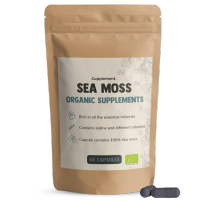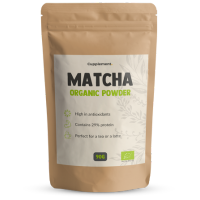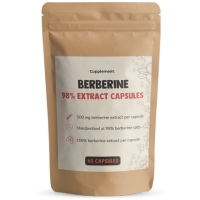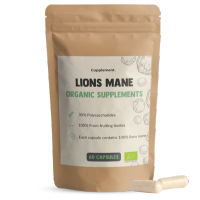Salt
Salt is one of the oldest and most versatile ingredients in cooking. It's used to season dishes, enhance flavors, and preserve food. But salt isn't just any salt; it comes in a variety of forms and origins, each with its own unique flavor, texture, and mineral profile.
From robust Celtic sea salt to refined Fleur de Sel, mineral-rich Dead Sea salt and soft pink Himalayan salt, each type has its own taste, texture and use.
Why our salt:
- Available in Celtic Sea Salt , Dead Sea Salt , Fleur de Sel and Himalayan Salt
- Selected for purity, mineral richness and authentic taste
- No additives, 100% natural
- Perfect for cooking, care or as a finishing touch to your dishes.
- Transparent origin with attention to sustainable and traditional harvesting methods

-
Dead Sea Salt

Dead Sea salt, as the name implies, comes from the Dead Sea, a salt lake bordering Jordan, Israel and the West Bank.
From € 12,95 -
Guérande Sea Flower

Fleur de Sel de Guérande is a type of sea salt extracted by hand from the salt lakes in the Guérande region of Brittany, France.
From € 15,95 -
Himalayan Salt
 From € 14,95
From € 14,95 -
Celtic Sea Salt

Celtic sea salt is a sea salt extracted from the Celtic Sea, an area in the Atlantic Ocean bordering Western Europe.
From € 14,95 -
Celtic Sea Salt
 From € 12,95
From € 12,95
What is Salt?
Salt is a naturally occurring mineral composed primarily of sodium chloride (NaCl). It's one of the oldest and most widely used seasonings in the world. Salt plays a role not only in cooking but also in our bodies: it helps regulate fluid levels, regulate muscle and nerve function, and maintain a healthy balance. Salt comes in various forms and origins, such as Celtic sea salt , Fleur de Sel , Dead Sea salt , or Himalayan salt . Each type has its own unique flavor, texture, and mineral profile.
How much salt are you allowed to eat per day?
The recommended daily amount of salt for adults is 6 grams, which is equivalent to one teaspoon. Too much salt can lead to health problems such as high blood pressure, while too little salt can also have adverse effects such as fatigue or muscle cramps. Natural salt, such as Celtic sea salt or Himalayan salt , also contains valuable minerals like magnesium and calcium. The main difference from refined table salt lies primarily in its taste, texture, and the way it's extracted. Natural salt is less processed and free of additives, making it a purer and more distinctive product, perfect for those who are conscious of flavor and origin.
What types of salt are there?
There are many different types of salt, each with unique properties:
- Table salt : fine, quickly soluble, often iodized.
- Celtic Sea Salt: coarse or fine, rich in minerals, obtained by evaporation of seawater.
- Fleur de Sel : delicate salt flakes, often used as a finishing salt.
- Himalayan salt : pink in color due to minerals, coarse or ground.
- Dead Sea salt : rich in minerals, sometimes also used for wellness and baths.
The difference lies primarily in texture, origin, and taste experience. For basic food, most salts are similar in sodium content, but the choice of salt can significantly impact your dishes and the overall taste.
Which salt do you use for what?
Salt is much more than just a seasoning; it plays an important role in cooking, as well as in skincare and wellness routines. Each type of salt has its own properties and uses:
Celtic Sea Salt
This salt is hand-harvested from the salt marshes of Brittany and remains slightly moist due to its natural clay content. The grains are coarser and softer in texture, allowing them to dissolve slowly and impart a deep, rounded salty flavor to dishes. It's perfect as a finishing touch to hot dishes like grilled vegetables, fish, or meat, where the salt melts beautifully in the heat.
Fleur de Sel
Fleur de Sel forms as a thin layer of salt crystals on the surface of salt pans, skimmed off by hand in calm weather. The flakes are light, dry, and crunchy, with a delicate flavor. Ideal as a finishing salt for cold or lukewarm dishes such as salads or desserts, where the texture of the flakes is preserved and provides a subtle contrast.
Himalayan Salt
Known for its soft, mineral flavor and characteristic pink color, it's widely used as a daily kitchen salt, but also in wellness applications thanks to its high mineral content. In the bath or as a scrub, it helps soften and cleanse the skin.
Dead Sea salt
Rich in magnesium, potassium, and calcium. Less suitable for eating, but ideal for bath and skincare routines . It promotes relaxation, softens the skin, and helps restore moisture balance.
In short: whether you want to refine a dish, add a pure flavor or create a relaxing bath moment, there is always a salt that suits your moment.
Buy salt
Buy salt easily from our carefully selected collection, from Celtic sea salt and Fleur de Sel to Himalayan salt and Dead Sea salt . Each variety is carefully sourced and selected for its flavor, texture, and mineral content. Browse our selection and order directly through our webshop; pure, transparent in origin, and with an eye for quality.
Frequently Asked Questions
How much salt are you allowed to eat per day?
The recommended amount of salt for adults is 6 grams, or one teaspoon. Too much salt can increase blood pressure, while too little salt can also have adverse effects, such as fatigue or muscle cramps.
Is salt bad for you?
Salt isn't bad, as long as you consume it in moderation. The body needs salt to retain fluid, keep muscles functioning properly, and keep nerves functioning properly. However, be careful with excessive consumption, especially with processed foods that are often already high in salt.
Can you eat salt if you have high blood pressure?
People with high blood pressure are advised to consume less salt. Eating less salt helps lower blood pressure. In that case, choose fresh, unprocessed products and use natural flavorings like herbs or lemon as an alternative.
What is the difference between sea salt and table salt?
Sea salt is extracted from seawater and contains small amounts of natural minerals. Table salt is refined, fine-textured, and often supplemented with anti-caking agents or iodine. They are similar in sodium content, but the taste and texture of sea salt are milder and more natural.
Is natural salt healthier than regular salt?
Natural salt, such as Celtic sea salt or Himalayan salt, contains slightly more minerals than refined table salt, but the difference in nutritional value is minimal. The biggest advantage lies in the pure taste, texture, and lack of additives.
How much is 6 grams of salt?
Six grams of salt is roughly equivalent to one level teaspoon. That amount contains about 2.4 grams of sodium. Note: many products already contain salt, so you'll reach that amount faster than you think.
What can you use salt for?
Salt is used for cooking, baking, preserving, marinating, and finishing dishes. It also plays a role in wellness and skincare, for example, in bath salts or scrubs. It purifies, relaxes, and supports the skin.
What is the difference between Celtic sea salt and Fleur de Sel?
Both are harvested by hand, but differ in texture and use: Celtic sea salt is moist and coarse, ideal for hot dishes where it dissolves beautifully. Fleur de Sel is dry, flaky, and delicate, perfect for cold dishes or as a finishing touch at the table.
Why is Himalayan salt pink?
Himalayan salt gets its pink color from naturally occurring minerals, particularly iron oxide (rust particles). These minerals not only give the salt its unique color but also contribute to its mild, rounded flavor. It is extracted from ancient salt deposits in the Himalayas of Pakistan, where it has been left to crystallize undisturbed for years.
What is the difference between sea salt and Celtic sea salt?
Sea salt is extracted worldwide by evaporating seawater, usually using modern techniques and mechanical drying. Celtic sea salt, on the other hand, is traditionally harvested by hand from the salt marshes of Brittany, France. It contains more natural minerals, is light gray in color, and remains slightly moist due to the clay soil. This gives it a fuller, milder flavor than standard sea salt.
Why is Dead Sea salt good for your skin?
Dead Sea salt is known for its high mineral content, especially magnesium, potassium, and calcium. These minerals help relax, restore, and purify the skin. Magnesium supports the skin's moisture balance, potassium helps with hydration, and calcium promotes cell renewal. Therefore, Dead Sea salt is often used in baths, scrubs, and skincare routines to promote soft, supple skin.
Which salt is best for me?
It depends on the usage:
Celtic sea salt: for warm dishes and a soft, full flavor. Fleur de Sel: as a finishing touch on cold or lukewarm dishes. Himalayan salt: versatile in the kitchen and suitable for baths. Dead Sea salt: ideal for baths and skincare due to its high mineral content.

















